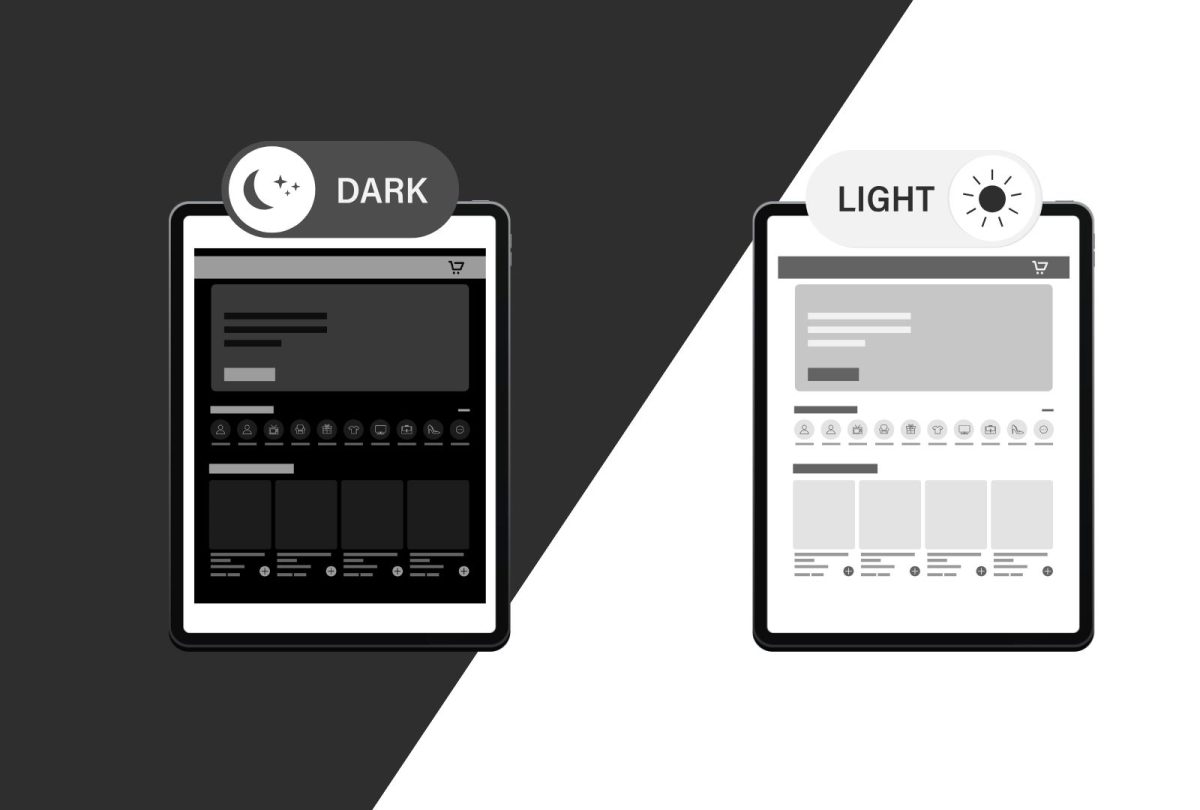Table of Contents

In the world of website design, few topics stir as much discussion as Dark Mode vs Light Mode. Both design approaches have their devoted fans, and both can significantly influence how users perceive and interact with a website.
For business owners, the decision isn’t just about aesthetics—it’s about boosting user experience. A well-chosen color scheme can improve readability, reduce eye strain, and even influence how long a visitor stays on your site.
In this article, we’ll explore the pros and cons of each mode, examine their impact on usability and accessibility, and help you determine which option might work best for your audience.
What are Dark Mode and Light Mode?
Dark Mode uses a darker background (usually black or dark grey) with light-colored text and elements. It’s designed to reduce glare and make viewing more comfortable in low-light environments.
Light Mode, the traditional design approach, uses a light background (usually white or light grey) with dark text. It’s often seen as clean, classic, and easier to read in bright settings.
Advantages of Dark Mode
Enhances Visual Hierarchy
Dark Mode naturally draws attention to brightly colored elements, making buttons, calls-to-action, and navigation menus stand out. This helps guide users toward desired actions and improves click-through rates. It’s especially useful for websites where conversion paths need to be visually clear and distinct.
Improves Focus on Visual Content
When placed against a dark background, images, videos, and design elements can appear more vibrant and detailed. This creates an immersive and engaging experience for visitors browsing portfolios, product showcases, or creative content. It also reduces visual distractions, keeping the focus on your key visuals.
Modern and Trend-Forward Appeal
Dark Mode has become a popular design choice among contemporary websites, signaling innovation and tech-savviness. Using it can help position your brand as modern and in touch with current design trends. This fresh look can make a strong impression on first-time visitors.
Advantages of Light Mode
Supports Readability for Text-Heavy Pages
Light backgrounds with dark text are still considered the gold standard for reading long passages online. This makes Light Mode ideal for blogs, service descriptions, and informational pages where clarity is essential. Visitors can scan and absorb content more easily, especially during daytime browsing.
Offers a Clean and Professional Look
Light Mode’s simplicity conveys a sense of trust, professionalism, and transparency. It aligns well with industries that require a polished, straightforward presentation, such as corporate services, education, or healthcare. This clarity can help communicate your brand message more effectively.
Performs Well in Multi-Device Viewing
Light Mode adapts consistently across desktops, tablets, and mobile devices, ensuring a uniform experience for all users. It handles different lighting environments well, making it reliable for visitors who access your site on the go. This stability supports accessibility and user satisfaction.
Accessibility Considerations
When it comes to accessibility, neither Dark Mode nor Light Mode is automatically superior—it depends on implementation.
- Contrast ratios must meet WCAG 2.1 standards.
- Offering user-controlled themes allows visitors to choose the mode that works best for them.
- Consider users with visual impairments such as astigmatism, where Dark Mode can sometimes cause blur or halation.
Dark Mode vs Light Mode – User Experience Factors
Audience Preferences Matter
If your target audience is tech-focused, creative, or spends long hours on screens, Dark Mode might resonate more. If your audience values clarity, tradition, and ease of reading, Light Mode may be a better fit.
Industry Norms
Some industries have established norms—financial and legal sites often stick to Light Mode for trust and clarity, while gaming and creative industries lean toward Dark Mode for style and immersion.
Context of Use
Consider where and when your visitors are likely to interact with your site. A streaming platform viewed at night may benefit from Dark Mode, while a business service site might favour Light Mode for office viewing.
Should You Offer Both Modes?
One increasingly popular approach is theme switching, where users can toggle between Dark and Light Modes. This flexibility ensures the best possible user experience by letting visitors choose their preference.
Many modern website frameworks make it possible to integrate a toggle without disrupting the overall design. It’s an extra step in development, but it can pay off in higher engagement and satisfaction.
How to Decide Which Mode Works Best for Your Website
- Analyse Your Analytics – Check your audience’s device use, time on site, and bounce rates.
- Test Both Modes – A/B testing can reveal which design boosts engagement and conversions.
- Consider Your Branding – The chosen mode should align with your brand personality and message.
- Prioritise Accessibility – Make sure your mode of choice meets accessibility standards for all users.
Conclusion: Finding the Right Balance
In the Dark Mode vs Light Mode debate, there’s no one-size-fits-all answer. The right choice depends on your audience, brand identity, and the type of content you offer. Dark Mode can create a sleek, immersive experience for visually rich content or tech-savvy audiences, while Light Mode delivers clarity, familiarity, and easy readability—especially for information-heavy websites. Both have their advantages, and both can enhance user experience when implemented thoughtfully.
If you’re unsure which to choose, consider offering both options and empowering your users to select their preferred viewing mode. This flexibility not only improves accessibility but also shows that you value your visitors’ comfort and needs.
At Pressific, we understand that design choices like these play a vital role in keeping websites strong, secure, and effective. Whether you prefer the bold elegance of Dark Mode or the timeless clarity of Light Mode, the goal remains the same: create a digital space that your audience loves to use.






